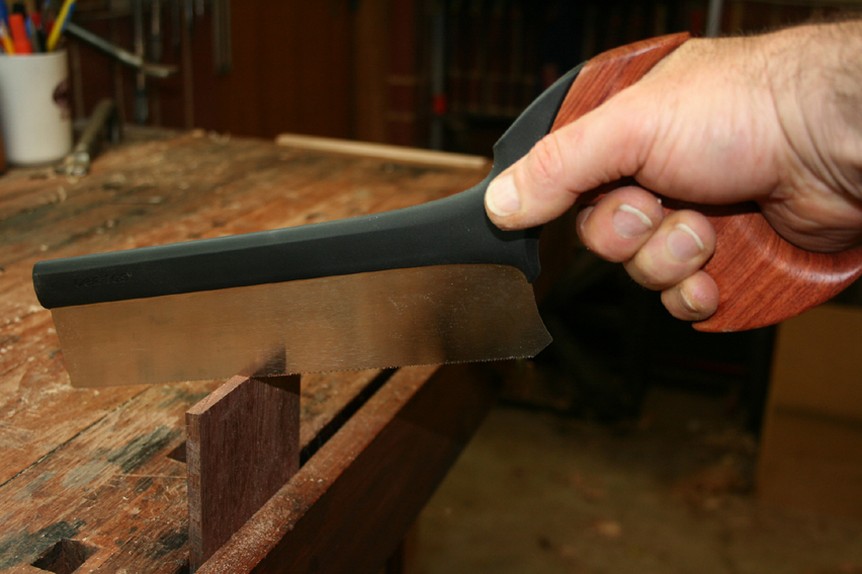
Originally Posted by
Matt Evans

You may be trying to go to slow. First time I used handsaws in general I had a difficult time establishing a kerf because I went to slow and to light. Set up your saw and use your fingers as a guide, then rapidly push to start your cut. I don't put pressure on the saw, just give it a quick half a saw plate length push forward. That gets me started and I can complete the cut from there without my thumb and forefinger as guides.
Takes a bit of practice to get going quickly and accurately, but lots of layout lines on scrap and a few hours time and you should be able to cut them fast and easy with that saw.
This made me think a bit about my own technique.
As Matt says, draw a lot of layout lines on a piece of scrap. My cuts are started pretty much as Matt describes with one minor difference. The say blade is held a few thousandths of an inch above the surface when it is started forward and softly lowered to the work. You may get a bit of bouncing in the beginning, After a bit of practice you should be able to get a good kerf started.
My objection to pulling a saw back to start a cut is it can bounce around a bit and spoil the work. It can also make little divots in the kerf making it hard to get the say moving forward in the cut.
Sometimes just for a challenge when all the layout lines have been sawn, I will try cutting between the lines. Mostly this is done when a saw is in the process of being tuned up or sharpened.
Kevin, if you live near Columbus Ohio, give me shout and stop by.
Likewise if you are in the Portland, Oregon area.
jtk
"A pessimist sees the difficulty in every opportunity; an optimist sees the opportunity in every difficulty."
- Sir Winston Churchill (1874-1965)




 Reply With Quote
Reply With Quote








